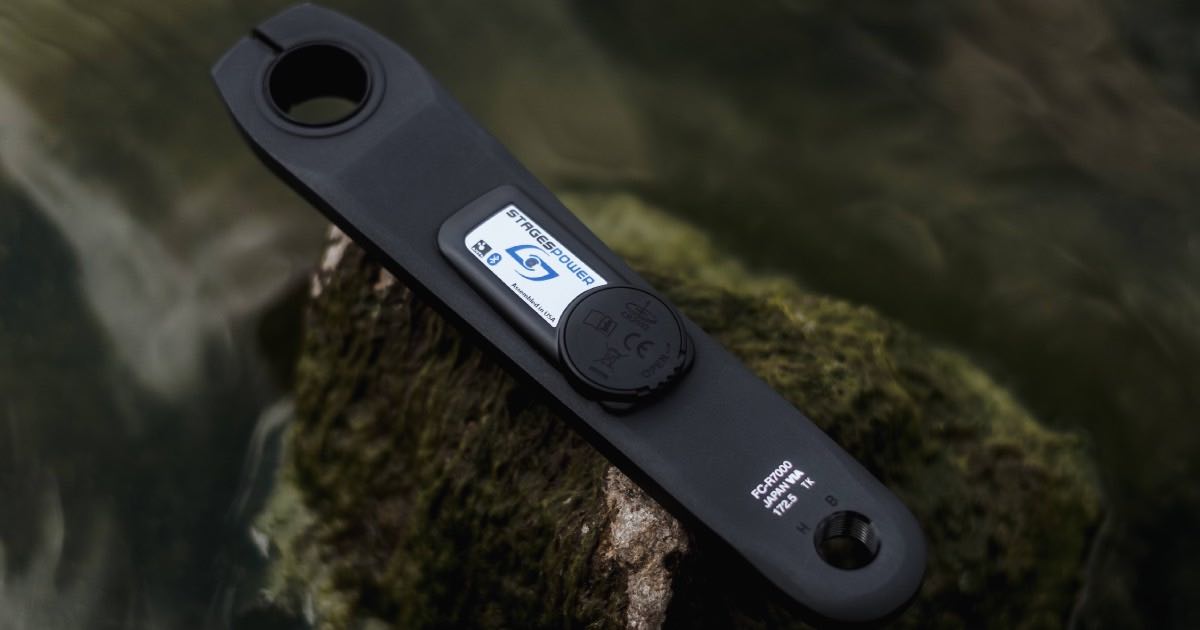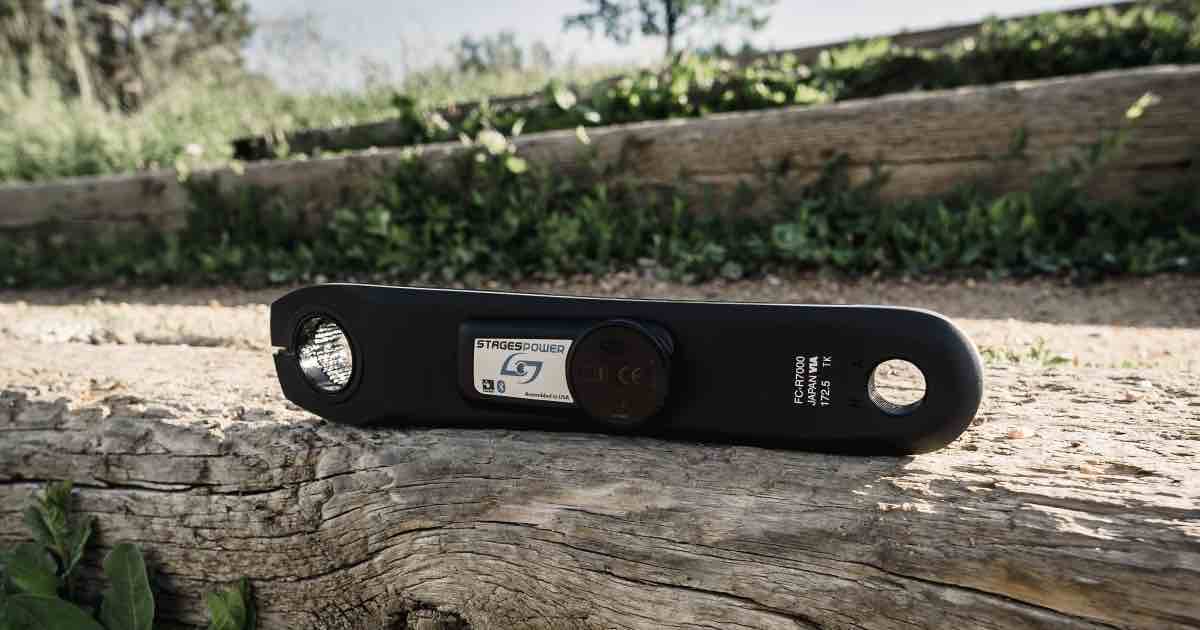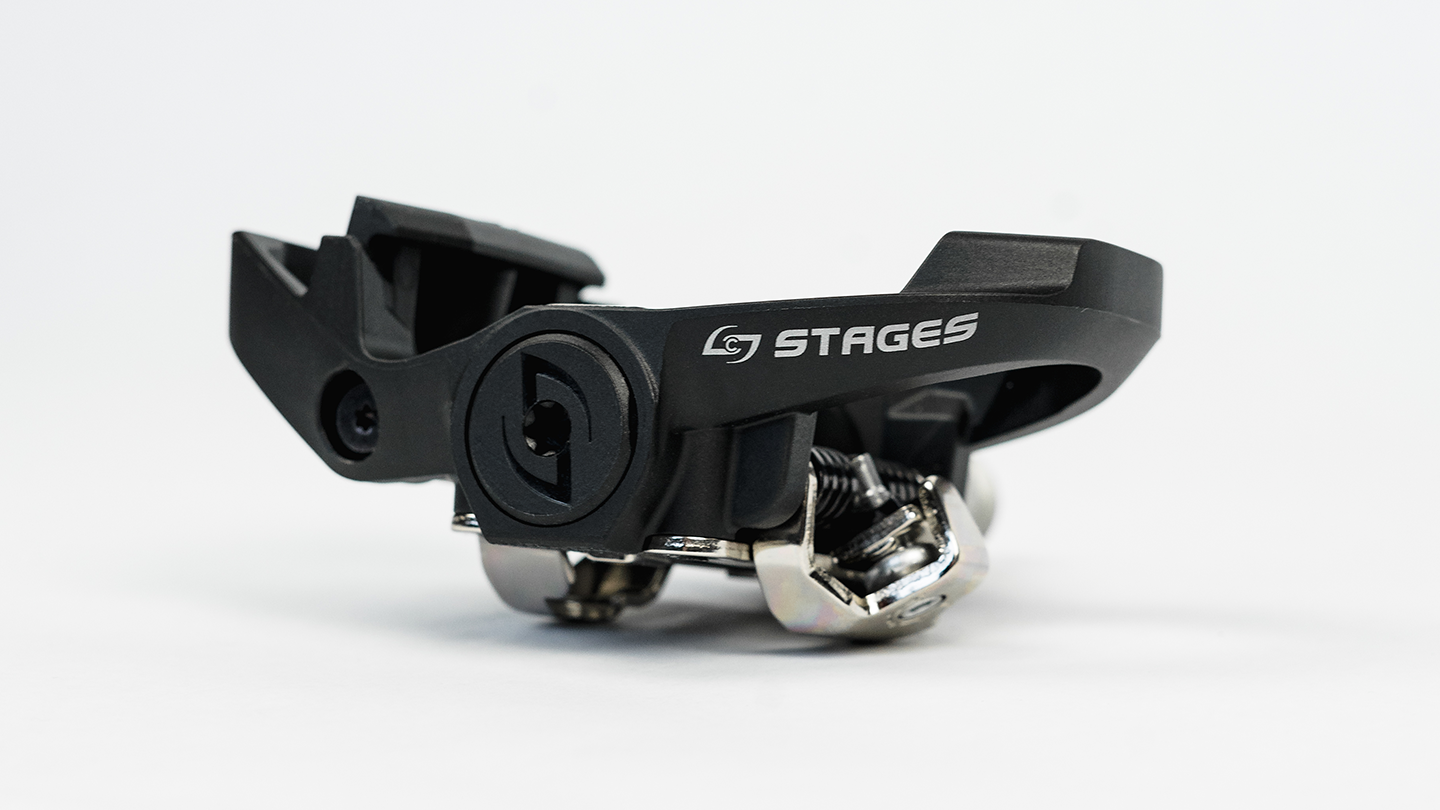Recommendations for Exercising in Smoky Conditions and Air Pollution
- By Kate Hector
- Published: Jul 5, 2022
- Last Updated: Jul 7, 2022

EXERCISING IN SMOKY CONDITIONS
Thanks to our partners at CTS for this guest post.
By CTS Coaches Reid Beloni and Jim Rutberg
With numerous wildfires still burning throughout the western United States, air quality in many places ranges from moderately bad to unhealthy depending on which way the wind is blowing. CTS Coaches have been getting a lot of questions from athletes about how air quality affects exercising outdoors. Even though you may not be affected by nearby forest fires, air pollution is a factor for athletes in many urban areas. Here are some recommendations for adjusting your training for poor air quality.
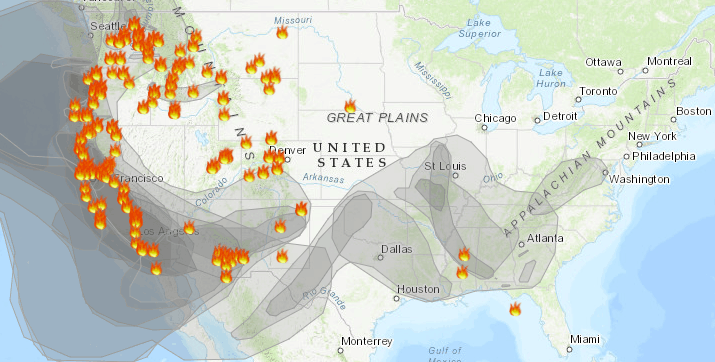

We are all aware that exercise is beneficial to our health, but exposure to air pollution isn’t. Harmful particles end up in your lungs causing irritation, inflammation, and can microscopic particulates can potentially enter the bloodstream. This can cause an increased risk for serious medical issues, including heart attack and stroke. What are athletes supposed to do when there is air pollution? We’ve outlined a few tips to help you make the most of your training plan while dealing with these conditions.
HOW DO I ASSESS AIR QUALITY?
Allergens in the air are tracked on most weather outlets. Weather.com provides an allergy forecast as well as the different allergy triggers that are forecast to be present. You can look up you own area on Weather.com.
How you approach training with different allergens in the air will be very individual. If you are someone who is affected by allergens you should be aware of the conditions that might put you at risk, and plan ahead before training. Reduce exposure, training intensity, and the duration of your training, and let someone know where you are training if you are susceptible to asthma attacks. Particulate matter and ozone are ranked on Air Quality Index (AQI) on a numerical scale between 0 and 500. Know the air quality in your area. https://www.airnow.gov/
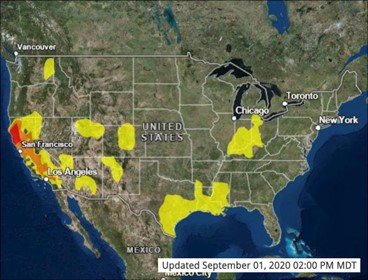

Athletes can breathe in 10-20x more air than a sedentary person during a given period of time. This also means you are breathing in a lot more particulate pollution. If the air quality in your area is ranked as Good or Moderate, air quality should pose no risk for anyone, including athletes.
The Unhealthy for Sensitive Groups rating is described as “the general public not likely to be affected.” Though the EPA adds, “People with heart or lung disease, older adults, and children should reduce prolonged or heavy exertion.” At this risk level, it is advisable for all athletes to pay attention to the conditions, time of day, wind direction, and exercise intensity. Sensitive people should also include those with asthma. People with asthma should pay special attention to the conditions, listen to their bodies, and carry a rescue inhaler.
The Unhealthy for Sensitive Groups rating is described as “the general public not likely to be affected.” Though the EPA adds, “People with heart or lung disease, older adults, and children should reduce prolonged or heavy exertion.” At this risk level, it is advisable for all athletes to pay attention to the conditions, time of day, wind direction, and exercise intensity. Sensitive people should also include those with asthma. People with asthma should pay special attention to the conditions, listen to their bodies, and carry a rescue inhaler.
At the Very Unhealthy and Hazardous category “everyone may experience more serious effects” and the “entire population is more likely to be affected.” You should avoid all physical activity outdoors and reduce any amount of exposure. You should also take steps to reduce the amount of pollutant that is in indoor air.
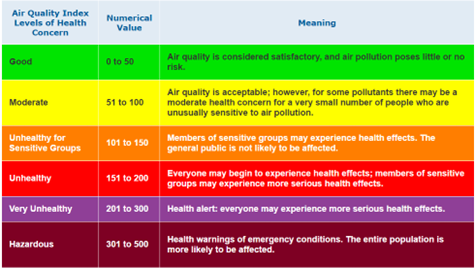

Pollutant-Specific Recommendations:
Wildfire smoke, smog in dense urban areas, and even allergens each bring their own unique challenges when planning training outside.
Smoke
When dealing with wildfire smoke, wind direction plays a pivotal role. On a recent ride in Colorado, the up-wind side of a local fire appeared as any regular day, while the air on the other side of the fire was dense with irritating smoke many miles from the fire. A check of weather visible satellites, as well as wind direction, can help you plan a route that avoids the downwind smoke. Checking news outlets for updates on the fire’s growth, area affected, and any road closures is also a necessary step. When in doubt: don’t put yourself into a dangerous situation, stay closer to home, and let someone know where you are riding.
Ozone and Smog
According to Airnow.gov, “Near ground level, ozone is formed when pollutants emitted by cars, power plants, industrial boilers, refineries, chemical plants, and other sources react chemically in the presence of sunlight.” Ground level ozone and smog tend to be worse in the afternoons when the sun is bright, temperatures are higher, and there is the more traffic on the roads. During these times of day there is more particulate matter in the air, and more energized compounds that increase the negative effects from exposure. For those reasons, if you are in an area prone to smog it is best to exercise early in the day or late in the afternoon when it is cooler. Also, try to avoid congested, high traffic areas. Ride or run on trails or in rural areas.
Allergens
Allergens typically peak in spring and fall depending on your latitude and the growing season. Those with seasonal allergies can usually continue to train uninterrupted through an allergy season using over the counter medications. If allergies can get bad enough that they influence your ability to train you might find better quality training indoors in filtered air.
Exercising in air pollution it should be approached with caution. Keep in mind that high intensity exercise requires deep and forceful breathing. If you do have to train outdoors, be picky with where and when you train in order to reduce exposure, and reduce your intensity and duration if you can’t escape harmful pollutants. Training in clean indoor air will allow you to maintain intensity and high quality training.
Think Big Picture
Forest fires thankfully tend to be relatively short-lived, and shifting your training indoors is the most effective way to continue exercising while reducing your exposure to particulate pollution. If you do train outdoors with a forest fire nearby, keep intensity low to moderate (endurance pace) to reduce the irritation. You can also just take some rest days and volunteer to help out with those more acutely affected by the fires. Missing a little training is not going to be the end of the world.
In contrast, athletes who live in areas prone to smog need to figure out how to deal with it on an ongoing basis. You may need to adjust your schedule for prolonged periods of the year, or permanently, in order to train outdoors at times of day when air quality is better. The more intense your workout the more you will be affected by poor air quality, so consider moving interval workouts indoors during periods when air quality is especially poor.
Advances in indoor training technologies are also providing athletes increased options for minimizing exposure to wildfire smoke and air pollution. Whether you are putting your bike on an indoor trainer or hopping on a Stages Bike, riding inside can be an effective way to maintain training volume and intensity when air pollution, wildfire smoke, or even high heat and humidity make training outdoors unpleasant.
What about masks?
With the COVID19 pandemic and smoke from wildfires, many athletes are getting accustomed to exercising while wearing a mask. When it comes to reducing infection risk, the purpose of the mask is to limit the escape or inhalation of droplets that could contain the virus. For smoke and air pollution, the mask is meant to filter our particulates. In both cases, the material and construction of the mask will make a big difference. A neck gaiter or bandana pulled up over your mouth and nose is better than nothing, but will be less effective than a multi-layer mask or an N95 mask. At moderate exercise intensities there should be no negative impact on blood oxygen levels when wearing a mask. The resistance of moving air through the mask would only be a potential issue at high intensities, and even then the effort and discomfort may increase but is unlikely to result in hypoxia.
In times when pollution and wildfire smoke were the only reasons for athletes to wear masks while training, our coaches typically advised that if the environmental conditions were bad enough that a mask was necessary, then it was probably bad enough that athletes would be better off training indoors or taking a rest day. With COVID19, exercising with a mask is not a matter of air quality, but rather reducing the potential for virus transmission, particularly when social distancing is difficult (like on single track trails).
Be safe and breathe easy!
Resources:
https://www.ncbi.nlm.nih.gov/pubmed/15367733https://www.ncbi.nlm.nih.gov/pubmed/15367733
https://www.airnow.gov/aqi/aqi-basics/https://www.airnow.gov/index.cfm?action=aqibasics.aqi - sens











